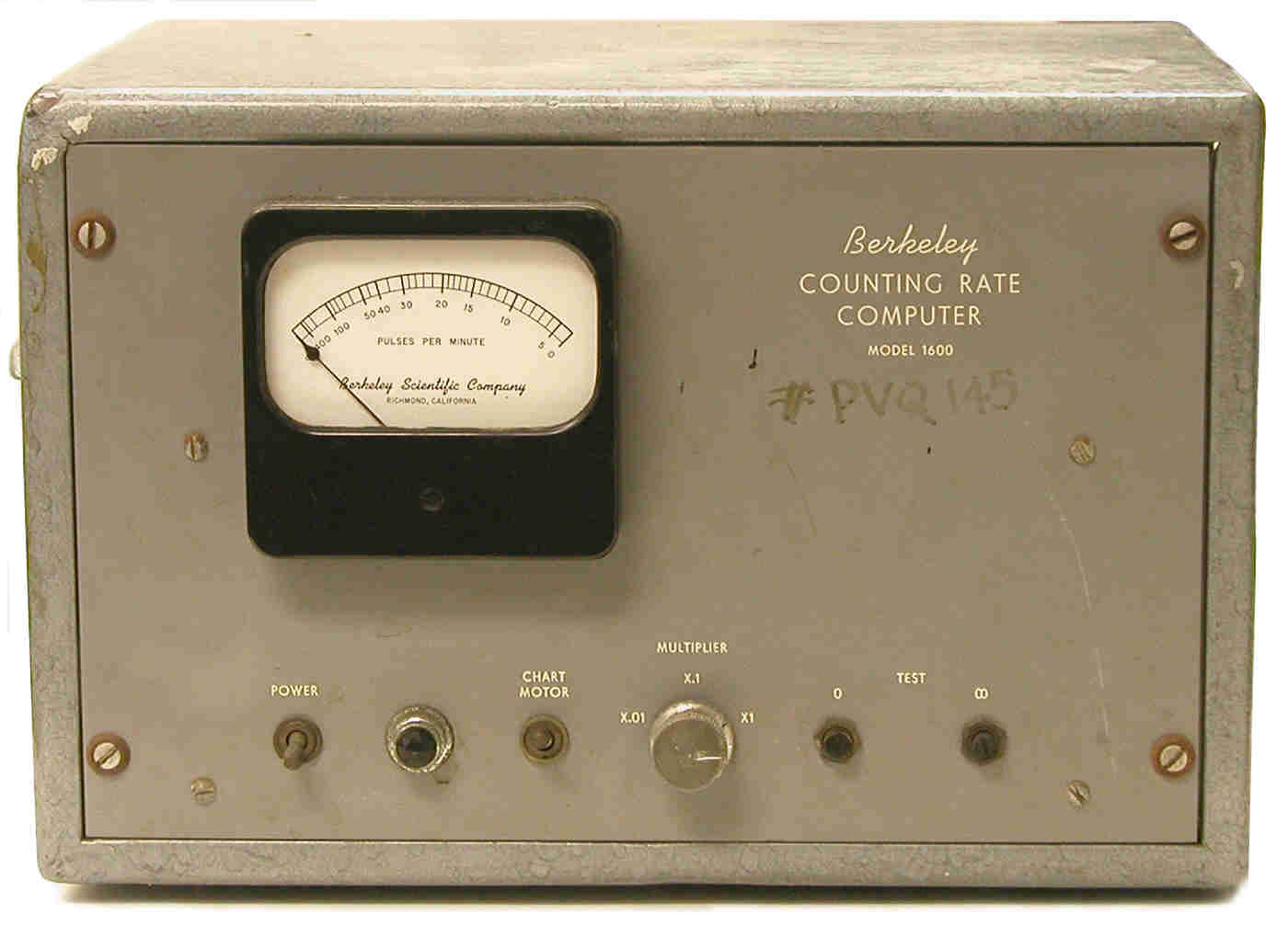Berkeley Counting Rate Computer (ca. 1951-1955)
The Model 1600 counting Rate Computer was manufactured by Berkeley Scientific Company of Richmond California. It was designed to convert the signals from a scaler into a count rate. Quoting the manufacturer: “Designed specifically for tracer applications requiring faithful response to rapid changes in counting rate, the Model 1600 will operate from any scaler that can be made to provide successive output pulses after accumulation of predetermined count. Computer then converts elapsed time between successive output pulses into average counting rate. Counting rate can be read directly on visible meter of computer.”

If a permanent record of the detector signal was required, the output from the counting rate computer could be fed to a strip chart recorder. The Model 1600A came with a recorder, the Model 1600 did not.
The unit shown here is identical to that described in the January 1951 issue of Nucleonics, where it is described as “The NEW Berkeley Model 1600.” The Model 1600 pictured in the second edition of the AEC Instrument Catalog (dated July 1, 1950) is a physically smaller version. It is not clear how else the two versions differ.
Scale: non-linear, from 0 - infinite, "pulse per minute," reads right to left with needle resting position at infinite. The highest notation on scale below infinite is 400.
Range: 4-400, 40-4,000, 400-40,000 cpm
Size: 10.5" x 14" x 9.25"
References
- Nucleonics January 1951 p 103.
- Atomic Energy Commission Radiation Instrument Catalog, page ARC-1A, date July 1, 1950.
